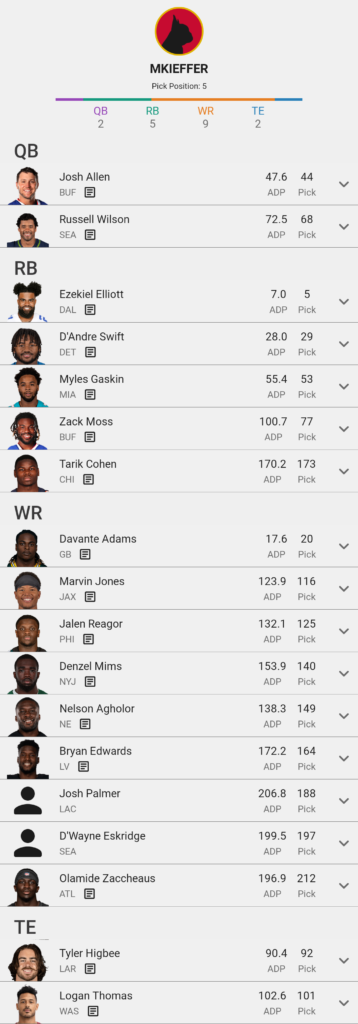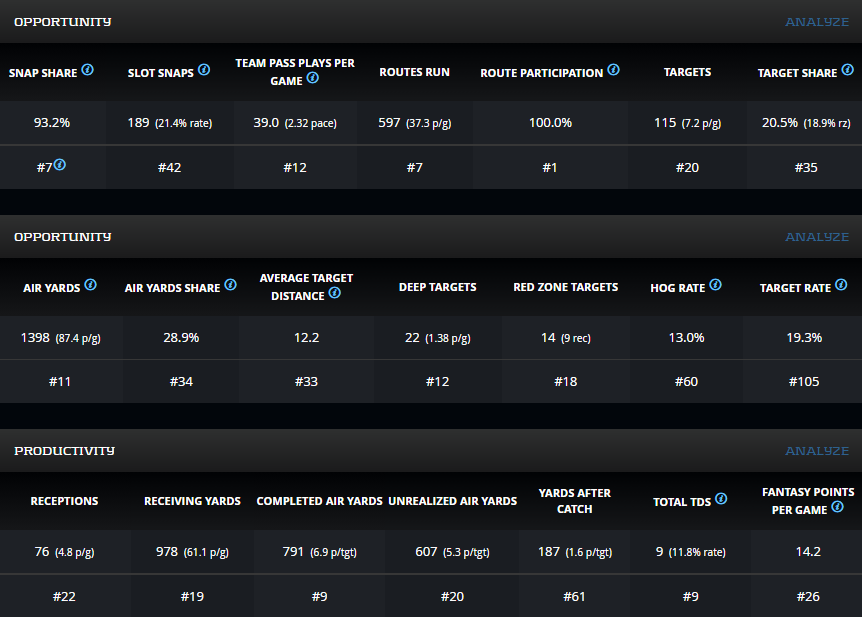Who doesn’t love Underdog Fantasy and drafting a best ball team on the Underdog Platform? There is honestly nothing better than firing up a draft on the phone while at the pool, even late at night after your entire family goes to bed and you are chomping at the bit to draft a team. I have done all of that before. I even drafted a team while I was waiting for my kids’ dance lesson to end. Do you want to know what my results were like last year drafting on Underdog? Not good. Turns out those random $5 drafts added up to hundreds of dollars. And at the end of the season, I cashed out maybe one hundred dollars for a loss overall.
I know I am not alone. Underdog is such a great platform, it is easy to fun to use. Too easy at times, which can cause your competition to not draft up to par. With some organization, Josh Larky‘s Best Ball Strategy Guide, and PlayerProfiler’s Best Ball Cheat Sheet, you can gain an edge on competition that is likely drafting their teams the way I was last year.
My rule for this draft was to follow the primer (two top 10 or top 12 quarterbacks, four to five running backs, two top 12 or top 14 tight ends, and 9-10 wide receivers) and to use the advanced stats and metrics to help guide my picks.
Team Construction
A benefit to using the cheat sheet is that it helps keep you from guessing which position to draft next.
If you draw picks 1.01 through 1.08, it will recommend a running back to draft. I picked fifth, and Ezekiel Elliott was the best running back available at that slot. From the end of round three and into round five, quarterbacks start being sprinkled in. Soon it starts to click which quarterback(s) to take and when. Later, tight end clusters show up in the rankings and it’s easy to see that you want to have your on your roster by the 11th round. These drafts move much more quickly than your standard draft.
Having an idea of where the positional clusters are will help you gain an advantage in a draft.
Many other teams in this particular draft selected players ranked outside of the top 216 players listed in our cheat sheet. There were crazy reaches such as Ryan Fitzpatrick going near pick No. 100 when the cheat sheet has him ranked No. 150 and his ADP is 156.7.
Knowing who to target and when is a big edge on a platform that tends to be casual.
Strengths
Ezekiel Elliott worried me a little bit when I drafted him since he has been a player I had shied away from to this point. But a look at his productivity encourages me now:
In 2020, Elliott averaged 14.8 (No. 14 among qualified running backs) Fantasy Points Per Game, 65.3 (No. 15) rush yards per game, and 3.5 (No. 8) receptions per game. Additionally what made me excited, because this is a best ball league, was his 97.6 (No. 10) Best Ball Points Added.
If low-end RB1 production is what we will get in a bad year, I am optimistic about what we can get in a year with a healthy Dak Prescott and a healthy offensive line.
Question Marks
The biggest question marks on this team are the wide receivers, aside from Davante Adams. Because at least three are started each week, I will need production week in and week out from two of Marvin Jones, Jalen Reagor, Denzel Mims, Nelson Agholor, Bryan Edwards, Josh Palmer, D’Wayne Eskridge, and Olamide Zaccheaus. As previously discussed, Edwards has one of the lowest Breakout Ages in the entire PlayerProfiler database, Zaccheaus is Best Comparable to Jamison Crowder, and Reagor is a post-hype player who people were in on last year that walks into a better offensive situation this year.
Typically we should fade wide receivers that change teams, but Marvin Jones is underrated.
Last year, Jones averaged 14.2 (No. 26) Fantasy Points Per Game while providing 88.9 (No. 19) Best Ball Points Added. Though I would love it more if he was my third wide receiver rather than my second.
Final Thoughts
This leads me to my last point: best ball drafts are about volume, practice, and improving. Going through this process of analyzing the team a few months before the season, I can see spots I would have liked to improve. What if I took Mike Williams instead of Logan Thomas and before taking Marvin Jones? Then instead of Palmer, what if I took a Blake Jarwin or Jared Cook as my second tight end? The wide receiving corps would certainly have a higher floor.
The best news is I can answer those questions by sitting in the lobby and hopping right into another draft! Using our Best Ball Cheat Sheet across the 50-plus best ball teams I have will result in a profitable year, I am sure of that.









